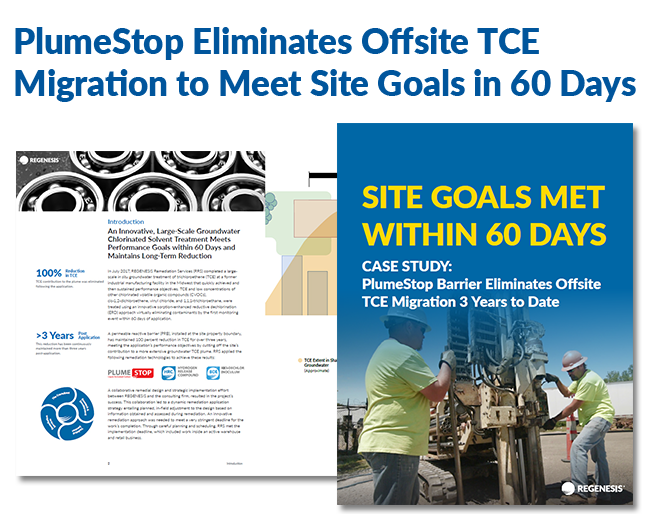This case study reviews the site of a large-scale in situ groundwater treatment of trichloroethene (TCE) at a former industrial manufacturing facility in the Midwest that quickly achieved and then sustained performance objectives.
Case study highlights:
- TCE contribution to the plume was eliminated following the application.
- This reduction has been continuously maintained more than three years post-application.
- The highly controlled PlumeStop injection resulted in no surfacing inside the building.
TCE and low concentrations of other chlorinated volatile organic compounds (CVOCs), cis-1,2-dichloroethene, vinyl chloride, and 1,1,1-trichloroethane, were treated using an innovative sorption-enhanced reductive dechlorination (ERD) approach virtually eliminating contaminants by the first monitoring event within 60 days of application. A permeable reactive barrier (PRB), installed at the site property boundary, has maintained 100 percent reduction in TCE for over three years, meeting the application’s performance objectives by cutting off the site’s contribution to a more extensive groundwater TCE plume.
Complete the form on this page to download the case study.


